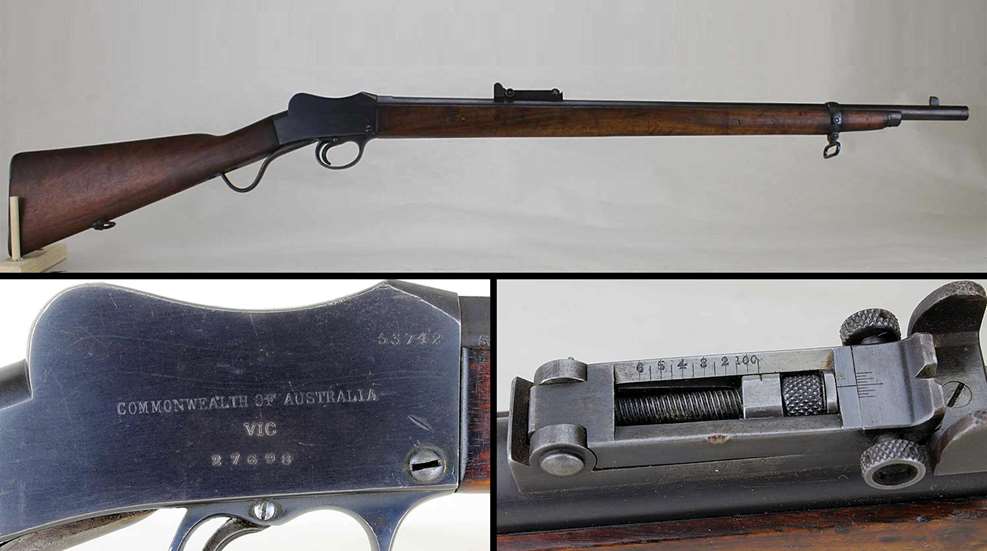
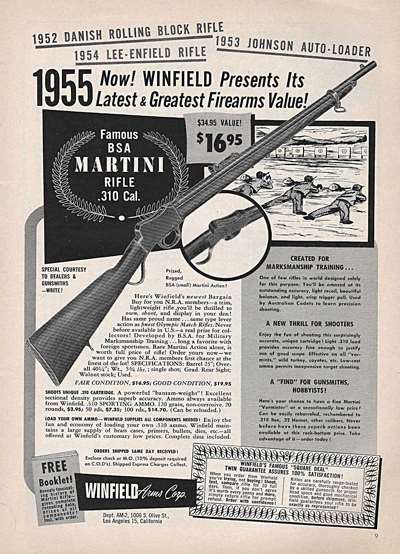
“In about 1955 a surplus arms dealer introduced the .310 caliber B.S.A. Martini cadet rifle to the American gun market,” Frank de Haas wrote in his 1969 book, Single Shot Rifles and Actions. “Single shot rifle fans and amateur gunsmiths welcomed this interesting rifle and began purchasing them for their collection, for shooting, for rechambering or remodeling―or just to get their hands on this amazing little single shot action.”
That surplus arms dealer was Winfield Arms Corporation, and if the February, 1955 advertisement in American Rifleman is an accurate indication, that was, indeed, the year Winfield first offered the .310 Martini Cadet and its .310 Greener cartridge to American shooters. Winfield targeted precision shooters in the ad with marketing language like, “…same type lever action as finest Olympic match rifles;” “Used by Australian Cadets to learn precision shooting;” and, “One of the few rifles in the world designed solely for [marksmanship training].”
While perhaps a bit ambitious in calling the .310 Greener cartridge accurate enough “to justify use of a good scope,” none of Winfield’s claims are false.
The “small” Martini action did appear in the Olympics in .22 LR rimfire configuration, the Australians did utilize the rifle to train its military cadets, and the little rifle-cartridge combination rendered adequate precision for the standards of its day, which is well over a hundred years ago now, for training neophytes the fundamentals of marksmanship.
Miniature Rifles
The Cadet’s “small” Martini action is so-named because it is based upon an older bigger brother, which itself bears the monikers of several cousins, including Peabody-Martini, Martini-Henry and Martini-Enfield. Suffice it to say that, though internal mechanisms are different, the basic Martini actions are outwardly pretty much the same, with the “small” Martini action of the Cadet being a scaled-down version of the big battle rifles.
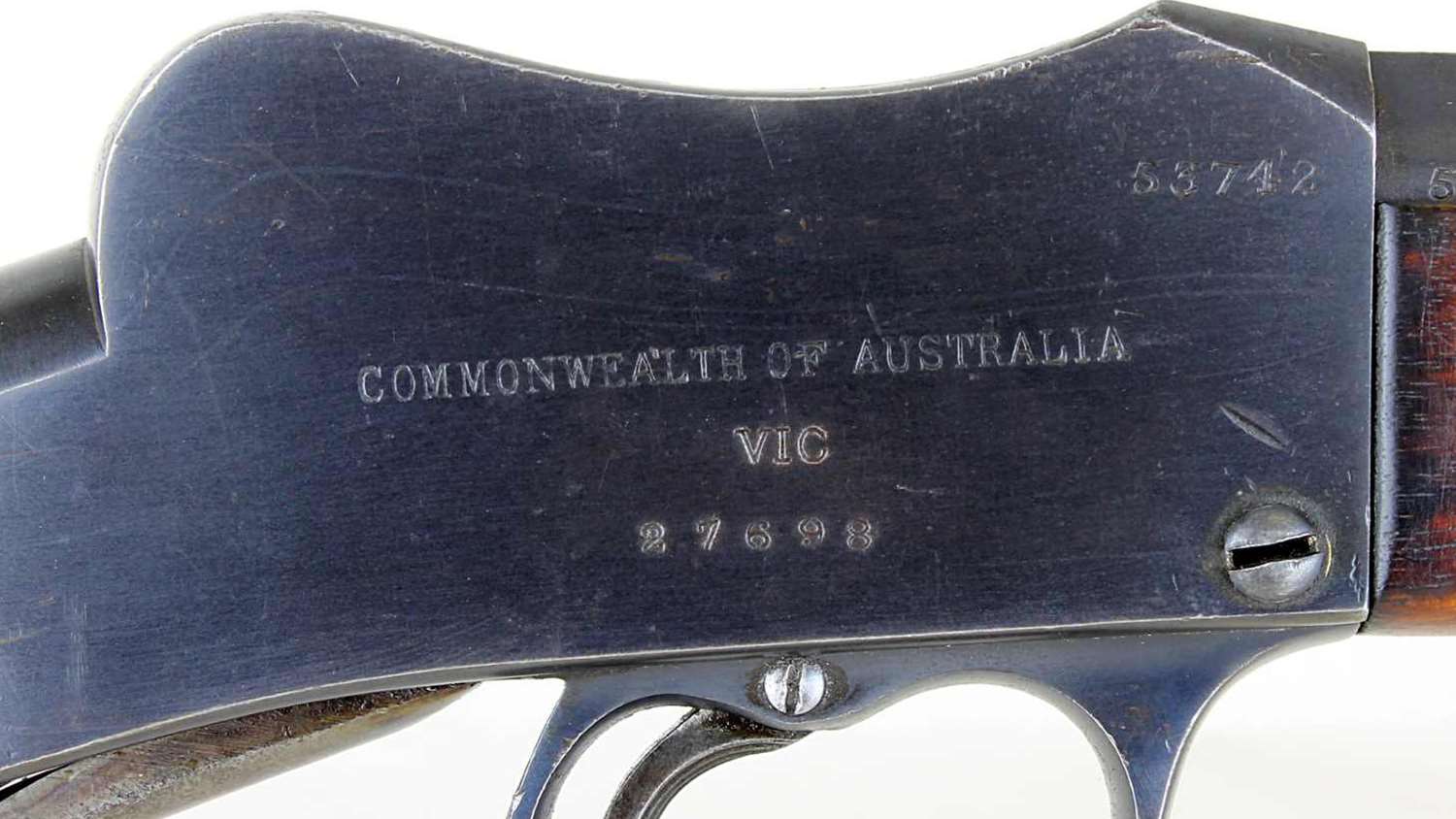
And really, that was its point. The .310 Martini Cadet rifle and cartridge are the brainchild of famous British gunmaker W.W. Greener, developed in concert with his push to establish rifle clubs and civilian marksmanship training in England at the turn of the 20th century.
Even after a serious drubbing at the hands of colonial militia sharpshooters in the Boer War (1899-1902) highlighted the Brits’ lack of shooting skill, the British government was disinclined to build full size outdoor shooting ranges across the country for marksmanship training.
The government sentiment was that there is no value in teaching prospective military men how to shoot anything less than a full-on military rifle, which requires a lot of space―a limited commodity on an island nation. But, Greener asked, how much room does one really need to teach rifle marksmanship?

Greener believed a “miniature rifle,” rather than a full-size and full-recoil service rifle, was adequate and desirable for teaching marksmanship. A small rifle shooting a small cartridge would do just as well for demonstrating the fundamentals, and so the well-respected gun maker chose a scaled-down version of the big Martini as an ideal starting point, and he created the diminutive (compared to the .450/.500 and .303 British service cartridges) .310 Greener cartridge to fire in it. Greener said he liked the small Martini action for “being exceedingly strong, simple in construction, and consequently less liable to get out of order than other more complicated mechanisms.”
Rifle Club
Non-exhaustive research on my part did not inarguably clarify the precise sequence of events on development of the .310 Martini Cadet Rifle. W.W. Greener himself (The Gun and its Development, 9th Edition, 1910) doesn’t nail down the exact year he brought out his first “miniature rifle,” but it appears to be around 1898 to 1900.
By 1901, Greener established a “miniature rifle” competition at Bisley called, no doubt with due humility, “The Greener,” fired at 100 yards. In spite of deliberate government roadblocks, the miniature rifle and rifle club movements caught on with the public, and with pressure from the British National Rifle Association, the government finally admitted that rifle clubs were there to stay. In 1905, the British War Office finally begrudged the usefulness of scaled-down rifles for training and adopted a .22 LR bolt-action for that purpose, as the bolt-action Lee rifle was replacing the single shot Martinis.
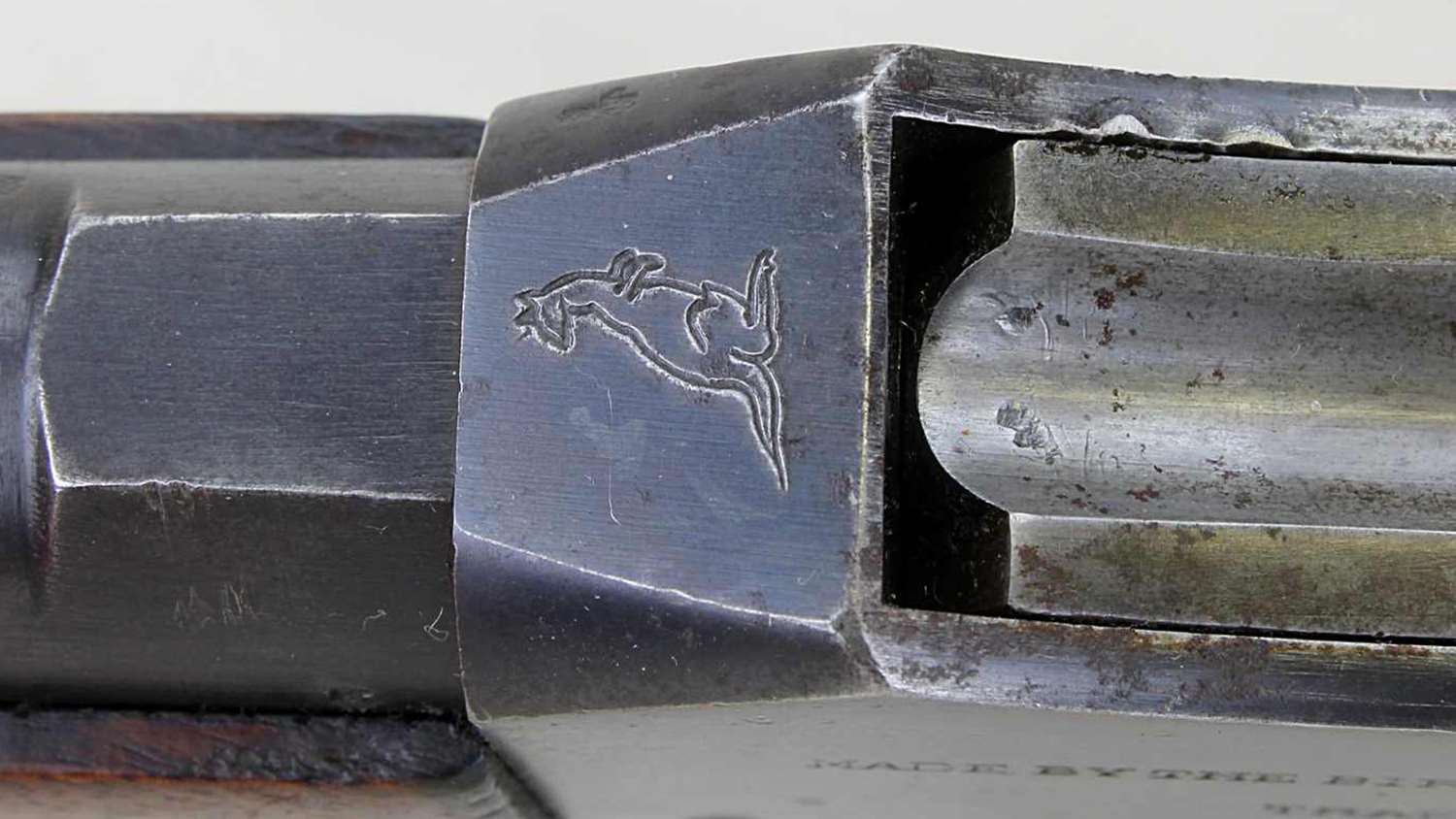
The small Martini actions came from several manufacturers, including the W.W. Greener company, Webley & Scott, Westley-Richards and Birmingham Small Arms (BSA). Whether Greener enjoined BSA to make the first “miniature rifle” small Martini action sometime around 1900 or whether he did it himself, isn’t absolutely clear. BSA apparently did land a contract to produce about 80,000 .310 Greener miniature rifles from 1911 to 1913. BSA continued producing the action as the No. 12 B.S.A. Martini, which established itself as a top-notch shooter of the .22 LR cartridge for competition. The small Martini action also served as the basis for the popular English “Rook Rifle” chambered for the (no surprise) .310 Rook cartridge.
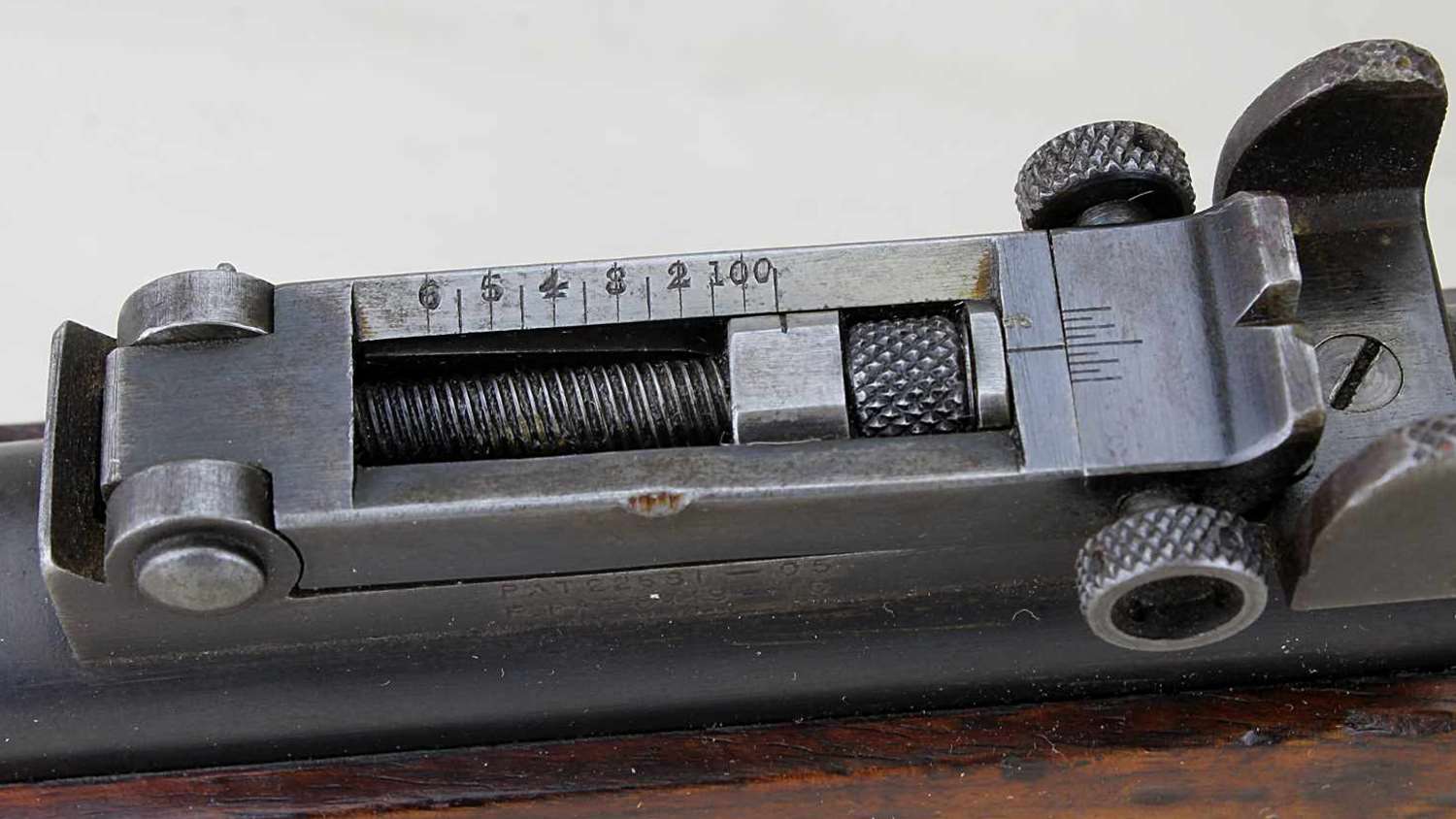
Greener’s first version of the miniature rifle based on the small Martini action was the “Sharpshooter’s Club” rifle. It featured a sporting style stock with an adjustable aperture sight mounted on the tang. Greener claimed the rifle, “[is] suitable for all ranges from 50 yards to 300 yards.”
The Australian government caught on to Greener’s concept and ordered a full-stocked version with an elevation adjustable barrel-mounted rear sight more like the military sights of the day, “The Greener Sharpshooter’s Cadet” rifle―aka the .310 Martini Cadet, a colloquialism apparently assigned by U.S. sportsmen after its arrival here. The Australian orders may represent the bulk of the 80,000 produced by BSA.
Winfield was perhaps not the first to bring the small Martini action to U.S. shores; rather, BSA had already found a market for the No.12 .22 LR match grade version of the rifle, which undoubtedly landed here before 1955. What Winfield did accomplish with the .310 Martini Cadet Rifles, however, was to provide a small Martini action suitable for centerfire cartridges. Converting the .310 Martini Cadet to fire varmint cartridges became so popular in the U.S. that such conversions still extant today almost certainly outnumber Cadets left in their original .310 Greener chambering.
Combat? Really?
The .310 Greener or .310 Cadet cartridge can hold about six grains of black powder. Even loaded with smokeless powder, and while perhaps ideal for its original purpose of marksmanship training in limited space, it leaves much to be desired as a sporting round.
The .311-inch heel-base RN lead bullet ambles out the muzzle at around 1200 fps to 1350 fps―about that of a .22 LR. The .310’s 84- to 125-grain bullet outweighs the .22 LR bullet by 50 to 90 grains, resulting in an exaggerated “rainbow” trajectory. Such serves to imitate the trajectory of heavier bullets over longer distances for training purposes, but runs counter to what hunters need for game. That said, the .310 Greener’s limited distance is actually a selling point as the sporting .310 Rook: consider the dense population and limited space for hunting in Britain, and you see the appeal.
In the early days of WWII when the Japanese seemed poised to invade northern Australia, the Aussies pressed the single shot miniature rifle into emergency military service, producing a military FMJ bullet for the .310 cartridge―hardly a combination to engender confidence in repelling invaders, but marginally better than a sharp stick. After this (thankfully) untried defense of the homeland, the Cadets apparently reverted back to a training role until the 1950s when Australia sold them as surplus, bringing us back to Winfield’s 1955 American Riflemanfull-page ad.
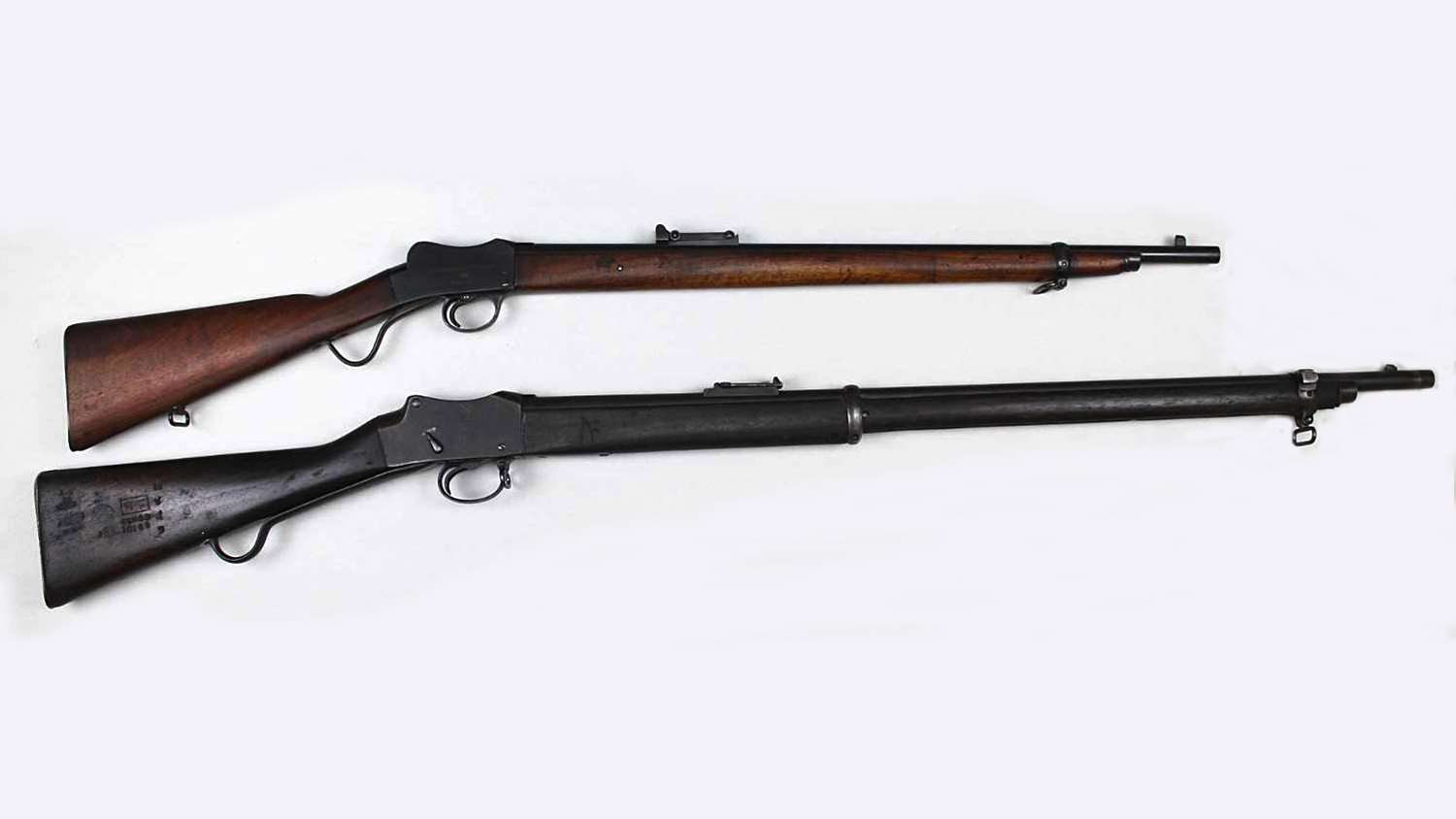
Americans were quick to rebarrel the small Martini to more popular cartridges like the .22 Hornet, .218 Bee and .32-20. Because rechambering to rimless cartridges required modifying or machining a new extractor, an extra step and expense, many shooters chose rimmed cartridges for the conversion.
Today, .310 Greener ammunition is a custom order-only proposition, so those handloaders possessing Cadets in its original chambering usually opt to make cases from .32-20. There are a few handloading caveats involved, as the heel-base bullets are not available commercially, and case conversion may require thinning the rims on a lathe, depending upon the individual rifle.
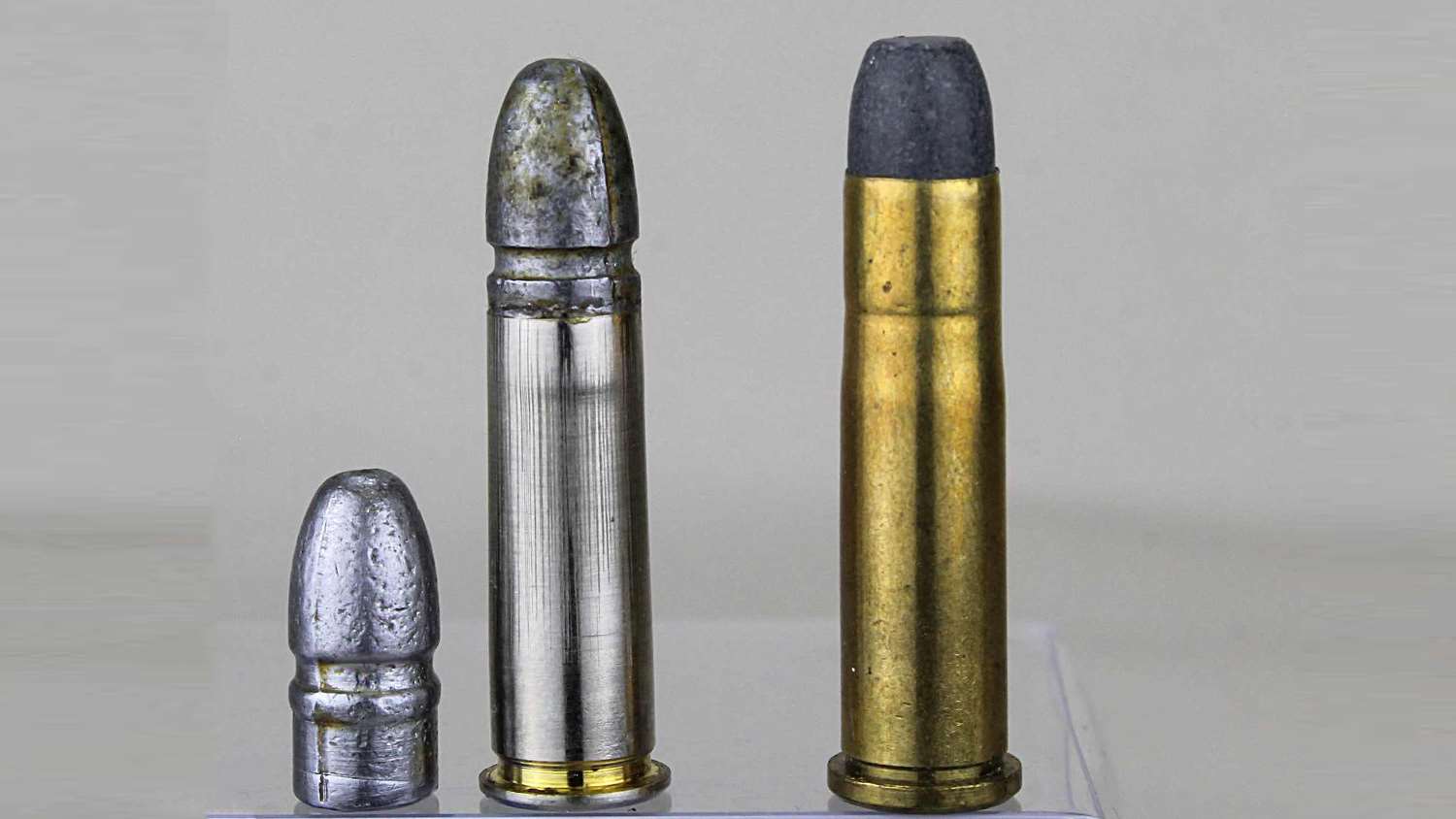
Today the Cadets are long gone from the marksmanship training arena, but in ushering in a new paradigm of short range marksmanship practice, their mark remains with us as a throwback in, not Long Range or High Power competition, but Air Rifle competition.
How is that, you ask? When Greener introduced his Sharpshooter’s Club rifle, he applied his same argument―“… the primary principles of rifle shooting [can] be learned as easily with the miniature rifle at a short range as with a heavier rifle at a greater distance”―to concurrently introduce the air rifle for indoor marksmanship training in urban England. Not coincidentally, Greener also manufactured precision air rifles for the purpose. But that, as they say, is another story.
5 replies on “The .310 Martini Cadet: The Little Rifle That Could by Art Merrill,”
Dear SIr,
A small part of the firing medchanismhas dropped out of my .22RF Martini.
Do you have a replacement parts agent in your club?
I will be away till the end of the week. How can i get in touch with these members?
Yours.
Peter Fergusson
I think your best bet is either Brownell or Ebay. Sorry as that is the best I can do for you. Grumpy
I’m looking for the meaning of what is stamped on the stock of my Greener 310 Cadet. N.S.W, C.M.F, 23.138, 10/11 each between commas on a separate line.
I do not have a website.
I tried myself and came up empty. Maybe you might want to try the American Rifleman magazine. Also can any of my fine readers out there help? Grumpy
Hi Nancy
If you have not already discovered the answer,
NSW stands for [the state of ] New South Wales. CMF (as stamped on the rifle) stands for Commonwealth Military Forces, while 10/11 is the month and year of issue, and the 23.138 apparently refers to the NSW “inventory/serial”. The above is according to https://www.tapatalk.com/groups/britishmilitariaforums/what-do-the-cadet-numbers-mean-t3510.html
Though not directly related to the Cadet stampings, during WW2 CMF came to stand for “Citizen Military Forces”, now referred to as the Army Reserve. While full time professional Australian soldiers were required to serve overseas, members of the CMF were kept for what seemed like the much more comfortable and safer mission of homeland defence. Hence the derogatory nickname “Koalas” and “Chocos”: Chocos refers to “chocolate soldiers”; Koalas because by law they were not to be shot or exported.
As a young man, Herbert Hoover lived and worked in Australia and, when elected President of the United States, he responded favourably to Australian conservationists’ requests to protect koalas (the bears not the soldiers). It seems that Hoover’s ban on importation of koala skins contributed to the preservation of the species.
As for the Citizen Military Forces, the definition of the Australian homeland included Australian administered territories, so the “koalas” soon found themselves heavily engaged against the Japanese Imperial Army in the bitter fighting for control of New Guinea (on Australia’s northern doorstep). As with the Australian troops of WW1, their service rifle was the .303 calibre SMLE.
Best wishes
David